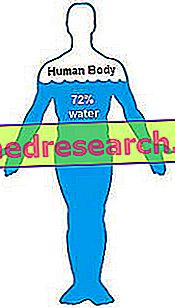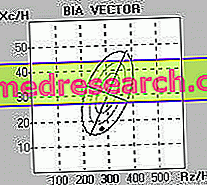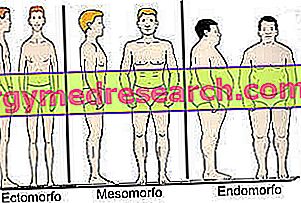According to a report released in June 2014 by the College of Podiatry in London, the feet of the British are becoming larger and larger. From 1970 to 2014, the average size of female feet has in fact passed from 37 to 38.5, while that of male feet has gone from 42 to 44. The study justifies this increase with the general improvement in nutrition, from which an increase in height and weight is derived, to which even the feet have adjusted, becoming larger
Category anthropometry
Curated by Gerolamo Cavalli and Gabriele Gualandris It does not seem to interest anyone, or at least a few; we are mainly interested in body fat, to the limit of lean mass ... And water? This lack of interest is curious, given that we are made of water for 65% of our weight. An adult man of about 70Kg should have about 45 liters in his body, it seems strange but it is really so
In children, an anticipation of adiposity rebound is considered an early indicator of the risk of developing obesity in adolescence and adulthood. Adiposity rebound, literally means rebound of adiposity. This term indicates the physiological process of inversion of the adiposity curve, which normally begins around 6 years of life
Stature: what is it and how is it measured? The anthropometric evaluation that measures the distance between the two bodily ends is defined stature ; however, as often happens, the correct term has been supplanted by a generic or incomplete statement, therefore improperly used; in this case the height
Bioimpedance or BIA BIA (or rather BIA) is the acronym of the English term Body Impedence Assessment , which in Italian can be translated into bioimpedance geometry . BIA is one of the fastest and most precise techniques for measuring and evaluating body composition (CC); its operation is indirect (like plicometry) and is based on the measurement of IMPEDANCE (Z) offered by the human body to the passage of an alternating electric current at a fixed frequency, by virtue of the fact that the organism's conduction capacity is directly proportional to the amount of water and electrolytes it con
Interview released by Personal Trainer Alessandro De Vettor for Fitness Report Magazine © √ Why is it important to establish the membership biotype in women's training? The importance derives from the fact that there are substantial anatomical, structural, endocrine and metabolic differences between the various biotypes. T
By Dr. Davide Marciano With this article it is my intention to talk about a further scientific / practical evaluation tool to test the goodness of the workouts, to then dwell, in a particular way, on the numerous results (healthy benefits, increase in muscle mass, weight loss) obtained by applying the data of a scientifically valid instrumentation
By Dr. Davide Cacciola Writing a training program is certainly not an easy task if you think about the fact that each person is unique and different from the others. In fact, everyone responds differently to physical exercise because there are many factors that can influence ability and reaction to training stimuli, from the subjective response to training sessions and resilience, to lifestyle
Biotypology is a branch of medicine that deals with the classification and study of types of body constitution, also examining the relationships between certain morphological and functional characteristics and pathological states. Some constitutional types, in fact, are more prone to certain pathologies than others to biotypes; this aspect, although of medical interest, in the context of personal training is still useful to provide further clues and feedback, useful above all if the person is already suffering from some pathology and / or if he / she has been referred to the gym by his / her ow
The height of a subject can be heavily influenced by dysmorphisms of the spine (kyphoscoliosis) and bone diseases such as osteoporosis and rickets. Not surprisingly, from the age of 30, stature tends to decrease with aging, by about: 0.03 cm / year up to 45 years; 0.28 cm / year over 45 years. To eliminate the influence of these factors and obtain a real estimate of the height of the subject, important to proceed with the due anthropometric evaluations, the so-called knee height is used
In this latest article dedicated to the calculation of the ideal weight, we will refer to various formulas. Before proposing it to you, we will illustrate the main factors that can influence it, in order to provide all the tools for a quick, correct and personalized calculation. The ideal weight corresponds to the body weight reached at the end of a harmonious development











